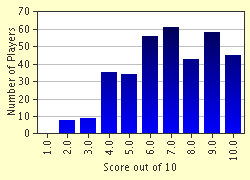Quiz Answer Key and Fun Facts
1. You can sometimes tell the source rock of a particular sandstone by looking at the mineral composition of the grains.
2. What happens to clastic sedimentary rocks during diagenesis (the process by which freshly deposited sand or mud becomes rock)?
3. Your geology professor falls into a pool of quicksand. What should you advise him to do?
4. I love loess. The word, that is. What exactly is loess?
5. Occasionally, on the deep ocean floor, out in the middle of nowhere, one can find clastic sediments, ranging in size from fine sand to boulders and pebbles. Where does this come from, when there is nary a continent in sight?
6. Very coarse sediment, stream channel deposits, sheet flow deposits, debris-flow deposits, generally coarsening upwards-- what depositional environment?
7. Dune-scale crossbedding interbedded with interdune areas, like deflationary pavements and playas. Ventifacts, mudcracks, raindrop imprints, and crystals of evaporites can sometimes also be found. What depositional environment?
8. Which side of a meandering stream should you buy land on if you want to increase your real estate investment: the point bar side, or the cut bank side?
9. You want to see whether a particular sandstone came from a tidal flat. What sort of bedforms would you be looking for?
10. Why should you care about clastics?
Source: Author
pu2-ke-qi-ri
This quiz was reviewed by FunTrivia editor
crisw before going online.
Any errors found in FunTrivia content are routinely corrected through our feedback system.

